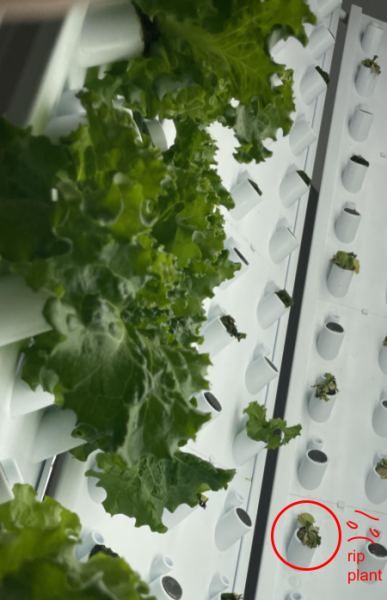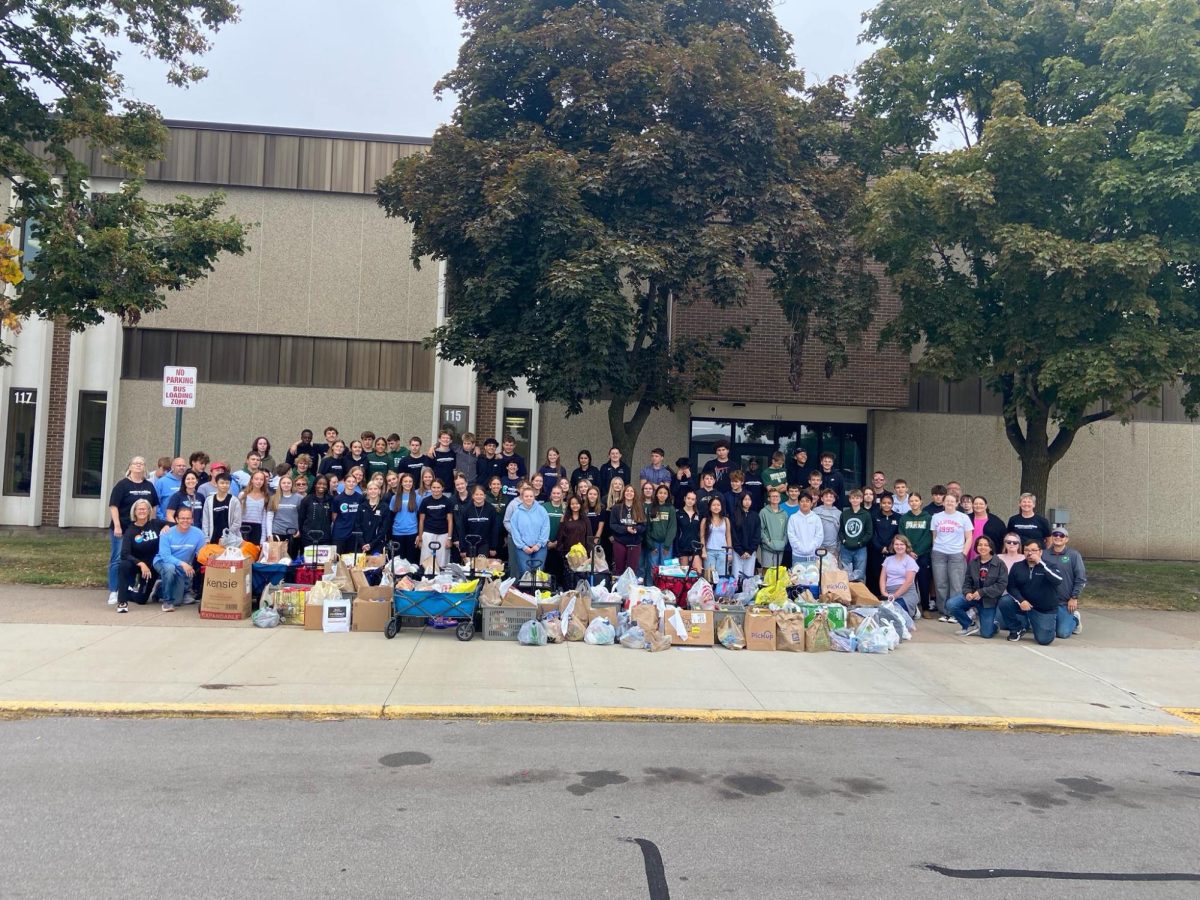Look around at the objects in commons, there are the new tables, modern and robust with cushioned chairs, but there is something more. Locked within the white walls of the rolling towers in the corner of the room, something green is growing with a determined persistence. Soon it will appear on your plate: in Tuesday’s burrito bowl, or in the bruschetta of today’s culinary arts assignment, and it was grown within walking distance of your face.
Those conspicuous white obelisks are Hydroponic Towers: indoor vertical gardens, growing a variety of fresh in-house vegetables used in culinary arts and even our school lunches!
Since the beginning of the 2023/2024 school year, our towering friends have been producing lettuces mainly, alongside a scattering of herbs: basil, parsley, thine, cilantro and the like.

Horticulture teacher Kim Pruss explains the benefits of hydroponic gardening.
“Maintenance on the towers is extensive, but past that you have to check the nutrients and pH each week, and 95% of the water just keeps getting circulated. A lot less water than something like outdoor growing.”
In a traditional garden, only around 60% of the water actually goes to the plant: the main culprits being increased evaporation outdoors and a reliance on space-inefficent soil for nutrients. Hydroponics work in a closed and controlled environment, being indoors reduces natural evaporation, and the water itself is prepared with nutrients, removing the need for soil and allowing the plants to thrive.
“Water flows down the inside walls of the tower, the roots catch the water, and then the water that goes back into the reservoir at the base just keeps getting circulated . . . Unless it gets clogged; it’s why that one is dead.”
Even with the occasional clog in the water wall, the harvest still provides a hefty bounty.
“Since the beginning of the year we’ve harvested five times, each tower producing about 18 pounds of produce.“
It is a bit difficult to visualize that much lettuce. For perspective, an average taco will have around 40g of lettuce in it, so a complete harvest would make enough of the stuff to fill over 800 tacos.
The team working on the gardens is vast but decentralized. Pruss and the horticulture classes do much of the planting, planning, and harvesting. Vocational Teacher Susan Waid & her students help with the cleaning and upkeep of the gardens. Food service helps with cleaning & preparing finished produce, and Culinary Arts teacher Kara Landgraf alongside her students make use of it.
“It allows us to use very fresh ingredients in the upper level culinary arts courses . . . lettuce for salads and wraps, basil for calzones and sauces. We don’t use produce from each cutting–only what produce we need when it’s available,” Landgraf says.
What culinary arts uses is small relative to the harvest, and what doesn’t get used goes to the lunch lines. Depending on what was already planned for the menu that day, the fresh produce replaces the usual stock. Anything left after that goes to other schools in the area, mainly Vel Phillips.
The hydroponics program originated at West with Stacey Markon, a chemistry teacher who brought the idea to OASD after attending a science conference.
In an interview with the Oshkosh West Index, Markon says, “After the conference, I started asking different science teachers and teachers in other buildings to see who has an interest in hydroponics . . . We built a buzz around the program and started the process of bringing hydroponics to not just West, but North as well.”
Now, almost a year later, the white towers of commons have become just about ordinary to the eyes of North students and staff. Their growth may not impact what we eat, or how we learn, but they make what we already do fresher, better, and tastier for their existence. The next harvest is estimated to occur on March 25.
Maybe while you prepare your next Asian Bowl or Nachos sometime soon, you will be eating something grown merely 30 feet from where you stand.








